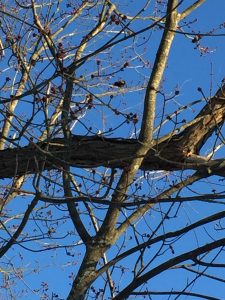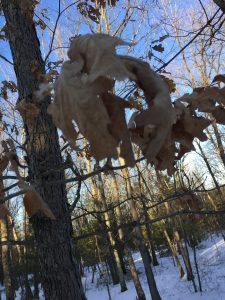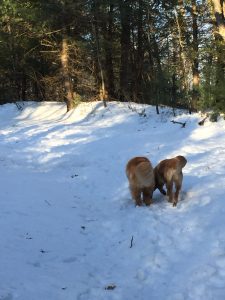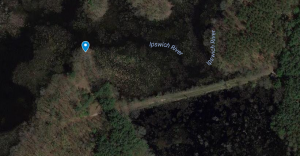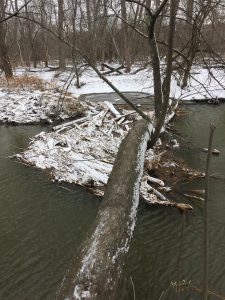For the Spring Break phenology Assignment, I returned to the phenology spot I went to over Thanksgiving break. This spot is my town’s town forest, and is build around some wetlands that used to cover all of our town. This town forest was first created in 1930, when over 100,000 different trees, including red and white pine, spruce, and balsam were planted by townspeople and boy scouts. Before this was done, the land was all part of a large wetland, with small islands. Now, the forest is in the middle of an estuary to the Ipswich River, and most of the forest is surrounded by this marsh habitat.
Many of the bird species that live here make their homes near the estuary, and can be seen when near the waters. While I was sitting in my spot, I heard a sharp “Tit, tit” bird call, with several breaks in between. I looked, up, and in the highest branch of a dead tree by the water, I saw a red wing black bird. I could tell because of the beautiful and distinct red tip on the bird’s wings. There were several other red wing blackbirds nearby, as well as many gulls flying far overhead. There were other birds flying by, but I could not figure out which birds they were. Also, while I was walking to get to my spot, I heard an owl hooting off in the distance.
While at my spot, I noticed the trees were all starting to get larger buds. I live outside of Boston, which has been experiencing slightly warmer weather. The pine trees all looked well, there were not many brown needles that I could see. This means that there had not been a lot of frosts following the recent warm weather. I went to my spot before the nor’easter hit Boston, so I wonder if this was changed after the storm. I also noticed that some of the oaks in the forest, possibly a swamp or a white oak, still had some of their dead leaves, which I thought was odd. Overall, the woody plants at my spot seemed to be in good condition.
Sources: http://www.readingma.gov/conservation-division/pages/town-forest
